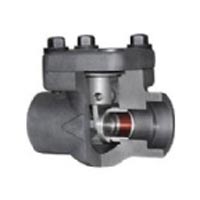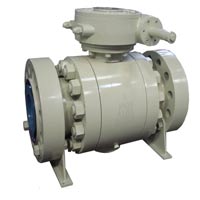Basic composition of control system
(1) Manual control
Take the liquid level control shown in Figure 1-1 as an example to illustrate the related concepts of manual control. The liquid level is a variable that the process needs to control. The operator adjusts the opening of the discharge valve according to the level of the liquid to keep the liquid level at the height required by the process. The manual control process is as follows.
1 The operator observes the liquid level of the container with his eyes, which is transmitted to the brain via the nervous system.
2 The brain compares the observed value of the liquid level with the expected value of the process, and sends out control instructions after analysis and judgment.
3 According to the control instructions issued by the brain, the operator manipulates the valve by hand to change the valve opening and change the discharge flow.
4 Repeat the above steps to maintain the liquid level at the desired value.
(2) Automatic control
Because modern industrial production processes need to control hundreds of thousands of parameters such as temperature, pressure, and flow, manual control is difficult to meet the requirements of modern industrial production processes. There are disadvantages such as high labor intensity, low control accuracy, and long response time. Various automatic control systems simulate manual control methods, replacing the functions of the operator’s eyes, brains, and hands with instruments, computers and other devices to realize automatic control of the production process. The simple control system includes detection elements and transmitters, controllers, actuators and controlled objects. Figure 1-2 is a block diagram of a simple control system.
Control valve system diagram
Sensor and Transmitter (Sensor and Transmitter) are used to detect the controlled variable and convert the detection signal into a standard signal. For example, thermal resistance converts temperature changes into resistance changes, and temperature transmitters convert resistance or thermoelectric potential signals into standard air pressure, current, and voltage signals.
The controller compares the standard signal output by the detection transmission link with the set value signal to obtain the deviation signal, calculates the error signal according to a certain control law, and sends the calculation output to the actuator. The controller can be implemented with an analog instrument or a digital controller composed of a microprocessor, for example, the PID control function module used in DCS (distributed control system) and FCS (field bus control system).
The Actuator is at the final position of the control loop, also known as the Final Control Element. The actuator is used to receive the output signal of the controller and control the manipulated variable changes. In most industrial production process control applications, actuators use control valves. Other actuators include metering pumps and adjusting baffles. In recent years, with the application of variable frequency speed regulation technology, some control systems have adopted frequency converters and corresponding motors (pumps) to form actuators.
When the load of the production process (controlled object) changes or the operating conditions change, through the detection and transmission of the detection element and the transmitter, the controlled variable of the process is sent to the controller, and the output after the control law calculation is sent to the actuator. Change the corresponding fluid flow in the process to keep the controlled variable consistent with the set value. It can be seen that the function of the detection element and the transmitter is similar to that of the human eye, the function of the controller is similar to that of the human brain, and the function of the actuator is similar to that of human hands and feet.
Similar to the control process of manual control, when the system is affected by interference, use the detection and transmission instrument to detect the controlled variable signal of the process (the function of simulating the human eye), and the controller compares the detection and transmission signal with the set value and presses a certain The control law calculates its deviation value (simulating the function of the human brain), and outputs a signal to drive the actuator to change the manipulated variable (simulating the function of the human hand) to restore the controlled variable to the set value.
The role of the control valve in the control system
(1) The importance of control valves
Control valve is used to adjust fluid flow. According to the national standard GB/T 17213 “Industrial Process Control Valve Part One Control Valve Terminology and General Regulations”, it should be called a control valve. However, there are still some literatures that call it an adjusting valve (Adjusting valve). From the overall perspective of the control system, the control of a control system is achieved through control valves. The importance of the control valve is as follows.
1 The control valve is a throttling device, which is a moving part. Compared with detection elements, transmitters, and controllers, in the control process, the control valve needs to constantly change the flow area of the throttle to change the manipulated variable to adapt to changes in load or operating conditions. Therefore, higher requirements are put forward on the sealing, pressure resistance, and corrosion of control valve components. For example, sealing will increase the friction of the control valve, increase the dead zone of the control valve, and cause the quality of the control system to deteriorate.
2 The internal parts of the control valve are in direct contact with the process medium. The differences between the control valve and detection element in contact with the process medium are as follows.
a. Different contact media. There are higher requirements for the corrosion resistance, strength and rigidity, and materials of the control valve. a
b. The detection element and the process medium can be isolated by means of isolation liquid, etc. The control valve is usually in direct contact with the process medium,
It is difficult to use isolation methods to isolate from the process medium.
3 The moving parts of the control valve are the main cause of “running”, “emerging”, “dripping” and “leaking”. It not only causes resources
Or waste of materials can also pollute the environment and cause accidents.
4 The control valve adjusts the flow rate by changing the flow resistance of the fluid through the throttling of the valve trim. Therefore, it is an energy-consuming component. For this reason, a reasonable choice and balance should be made between reducing energy consumption, reducing pressure loss of control valves, and better controlling quality.
5 While the control valve throttles the fluid, it also causes noise. For example, when the valve outlet pressure is lower than the liquid vapor pressure, flashing occurs; when the valve downstream pressure is higher than the liquid vapor pressure, cavitation occurs. The noise caused by the control valve is related to the design of the control valve flow path, operating pressure, and the characteristics of the controlled medium. Therefore, reducing noise and reducing pressure loss put forward higher requirements for the application of control valves.
6 The adaptability of the control valve is strong. It is installed in a variety of different production processes. Operating conditions such as low temperature, high temperature, high pressure, large flow, and small flow in the production process require the control valve to have various functions. The control valve should be able to adapt to different applications.
Requirements.
7 Detecting components, transmitters, controllers, etc. are developing rapidly, with a lot of human and material resources invested. Relatively speaking, it is generally considered that the control valve has a simple structure. Therefore, the manpower and material resources for research and development of the control valve are relatively insufficient.
(2) The role of the control valve in the control system
The role of the control valve in the control system is as follows.
1 The control valve is used to automatically control the flow of fluid in the system, and realize the function of automatically adjusting the relevant process variables in the production process. Unlike manual valves, the control valve can be adjusted automatically without manual manipulation. Therefore, labor intensity can be greatly reduced and production efficiency improved.
2 The control valve can return to a safe state in time when the energy or signal supplied to it is interrupted to avoid accidents. The control valve is closed through the selection of control valve failure closed (FC), failure open (FO) or failure retention (FR). Open or maintain the opening during failure to prevent accidents from occurring or spreading.
3 The control valve can compensate the non-linear characteristics of the controlled object and realize the stable operation of the production process. The key to the stable operation of the control system is that the open loop gain of the system remains constant during operation. For the production process with nonlinear characteristics of the controlled object, for example, the production process with saturated nonlinear characteristics such as temperature control, the nonlinearity of the controlled object can be compensated by selecting the flow characteristics of the control valve to make the production process run stably.







